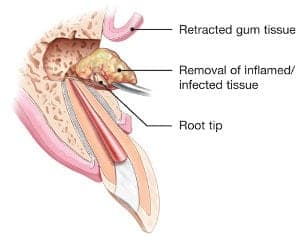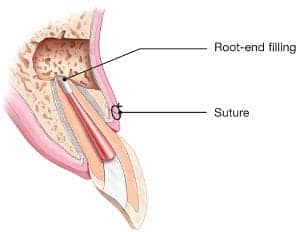What is a root canal?
Root canals are a routine treatment with millions performed across the country each year. They have a high success rate and very few complications. Having an Endodontist perform the procedure ensures the highest level of specialty care.
The soft centre of the tooth is referred to as the pulp. It contains nerves, blood vessels and connective tissue. As a tooth develops and grows the pulp plays an important role, but once fully developed, a tooth can maintain nourishment through surrounding tissue. When the pulp becomes injured, inflamed, or infected the canals within the tooth that contain the pulp will need to be cleaned out and disinfected. An abscess tooth left untreated can cause further damage and discomfort. Also known as endodontic therapy, a root canal may be required to save and restore the tooth and avoid extraction.
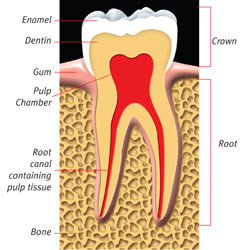
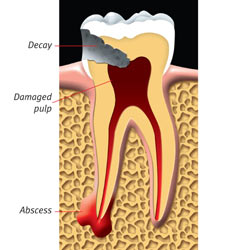
Treatment Options
Conventional/Orthograde Root Canal Therapy
Procedure:
You will receive a local anesthetic (freezing) to numb the area. A rubber dam will be placed around the tooth (a thin flexible shield to prevent saliva contaminating the area).
A small opening will access the canals and damaged pulp so that the removal may begin.
Once the pulp is gently removed and the canals thoroughly disinfected the canal will then be filled with a rubber-like material and sealed.
The opening of the tooth will then be sealed with a temporary filling (a permanent filling or crown will be placed by your General Dentist).
Endodontic Retreatment
On occasion, endodontic treatment will require a retreatment. With proper care a tooth that has had a root canal can last as long as any natural tooth. An indication for retreatment may take months or even many years after the initial procedure. This may be the result of improper healing or new problems arising.
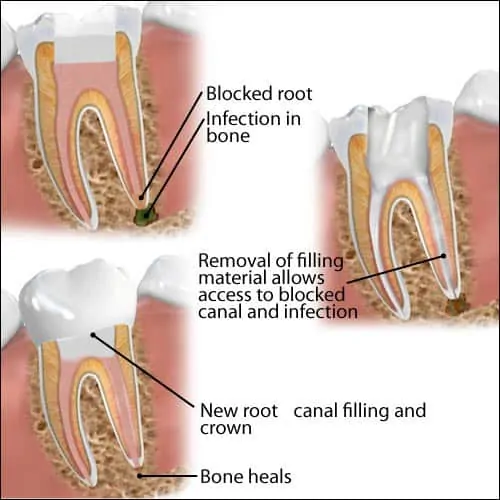
Root Canal Retreatment may result from a number of reasons, including but not limited to:
- Complex canals left undetected and untreated
- Crown/restoration placement was delayed following the procedure
- New decay
- Cracked or loose crown/filling
- Tooth fracture
Procedure:
You will receive a local anesthetic (freezing) to numb the area. A rubber dam will be placed around the tooth (a thin flexible shield to prevent saliva contaminating the area).
Restorative material removed to gain access to the canals and previous filled material will be removed and tooth will be carefully examined for unusual anatomy, infection, trauma, or anything else that may have led to retreatment.
After cleaning the canals, the endodontist will fill and seal the canals and place a temporary filling in the tooth. If the canals are unusually narrow or blocked, your endodontist may recommend endodontic surgery. This surgery involves making an incision to allow the other end of the root to be sealed.
After your endodontist completes retreatment, you will need to return to your dentist as soon as possible to have a new crown or other restoration placed on the tooth to protect and restore it to its full function.
Endodontic Surgery / Apicoectomy
Also referred to as Root-end Resection, an apicoectomy may be required if a nonsurgical root canal would either be ineffective or inaccessible in treating the presenting condition or anatomy. This is the most common endodontic surgery, and most people can return to regular activities the following day.
Procedure:
You will receive a local anesthetic (freezing) to numb the area
An opening in the gum tissue above the affected tooth will expose underlying bone and infected tissue
Infected tissue will be removed along with the end tip of the tooth root and the root will be sealed with a small filling
The gum tissue will be sutured to promote healing and the bone will heal around the root end over a period of months
